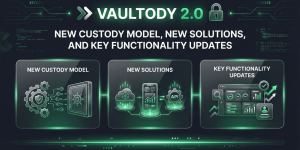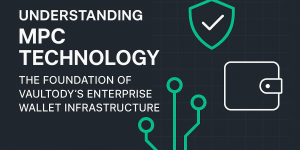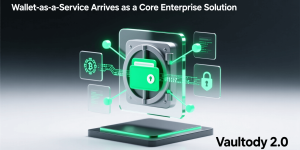Top 10 Things Institutions and Banks Must Consider When Choosing an MPC Provider

As institutional investors and banks deepen their engagement with digital assets, secure and scalable crypto custody becomes non-negotiable. Multi‑Party Computation (MPC) is emerging as the gold standard for safeguarding assets, offering an efficient and robust alternative to hardware wallets, multisig, or cold storage. However, MPC providers vary widely in architecture, governance, scalability, compliance, and cost-efficiency. This guide explores the top 10 factors institutions must evaluate - grounded in Vaultody’s platform strengths and broader market needs.
1. True MPC Architecture: Eliminate Single Points of Failure
Vaultody’s MPC uses true distributed key generation and signing - splitting keys into geographically and logically separate shards. No single entity ever holds the full private key, mitigating risks from hacks or internal threats.
2. Enterprise Governance and Policy Controls
Institutional crypto custody demands robust governance frameworks. Vaultody offers General Vaults, Smart Vaults, and Automation Vaults—each designed to meet specific operational needs. These vaults support customizable transaction policies, multi-tier approvals, time-based constraints, and role-based permissions, all enforced through secure hardware enclaves.
Smart Vaults are ideal for operations that require human oversight, offering maximum control and policy flexibility. Automation Vaults, on the other hand, are optimized for automated workflows—perfect for institutions seeking to scale with minimal manual intervention. Whether your operation prioritizes oversight or efficiency, Vaultody’s vault architecture adapts to your governance model.
3. Compliance-Ready Infrastructure for Regulatory Alignment
With integrations for AML/KYT, address whitelisting, and transaction screening, Vaultody ensures future compliance with frameworks like the EU MiCA - delivering audit-ready logs for regulatory needs.
4. End-to-End Auditability and Transparency
Vaultody maintains detailed off-chain and on-chain logs, including policy changes, user actions, and transaction history—all exportable for bookkeeping, third-party audits or compliance reviews.
5. Multi‑Chain and Token Support for Scalability
Vaultody supports multiple blockchains and token standards (EVM-compatible, stablecoins, NFTs) with unified dashboards and gas abstraction across child addresses, simplifying multi-chain asset management.
6. Disaster Recovery and Key Reconstruction Capabilities
Vaultody ensures robust data protection through encrypted backups and geo-redundant shard storage, with mandatory vault backups automatically generated at the time of creation. In the event of an emergency, vaults can be frozen, activating institutional-grade recovery mechanisms to safeguard assets.
Complementing this, Vaultody offers its own Backup and Recovery Tool - a user-friendly, open-source solution designed to guide users through the full backup and recovery process. The tool optionally assists in generating a strong RSA key pair or allows users to view their existing key pair. It also facilitates the complete backup process, prompting users to securely store the backup file locally on a device to which only they have access—serving as verifiable proof of ownership.
For recovery, the tool requests the necessary data to initiate the restoration process. Once the provided information matches system records, users regain access to their master extended private key (xPriv) and are restored full control over their vault(s).
7. API-First Integration and Operational Automation
Vaultody offers rich REST APIs, webhook support, and “Smart Automations” to integrate custody seamlessly into institutional workflows - automating vault creation, approvals, and reporting.
8. Institutional-Grade Insurance and Risk Mitigation
Vaultody partners with custody-insured frameworks. Smart Vault security features such as time locks, velocity checks, and vault freeze mechanisms support institutional risk mitigation policies.
9. Cost‑Efficient Operations at Scale
With Smart Vaults and Automation Vaults, Vaultody significantly reduces gas fees through batch transaction execution and "station address" gas funding. Internal reports show savings of up to 90% compared to traditional MPC or multisig solutions. Additionally, our Tron staking feature enables near-zero fee transactions. Your primary operational wallets remain fee-free, while your staked TRX quietly powers your ecosystem in the background - maximizing efficiency without compromising performance.
10. Proven Track Record and Real‑World Use Cases
Vaultody is actively used by exchanges, fintechs, and trading desks. Its Smart Vaults and automation features, launched in mid‑2024, demonstrate real-world performance, security, and scaling in high-volume environments.
Conclusion
Choosing a secure, scalable MPC provider is a strategic imperative for banks and institutions venturing into digital assets. Vaultody stands out with its:
- True distributed MPC architecture
- Smart enterprise-level governance
- Compliance-aligned infrastructure
- Efficient multi-chain operations
- Disaster recovery and backup mechanisms
If you feel ready to explore further contact Vaultody for a demo or visit our website pages to learn more about our products and solutions.




 Login
Login







 Copy link
Copy link